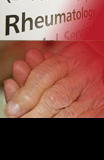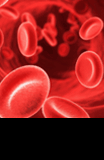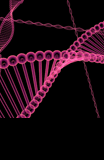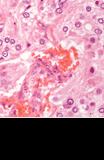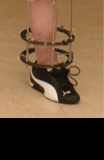Genetic 'marker' linked to side-effects from skin cancer treatment found

New research has identified a genetic marker that could be used to predict a patient's risk of developing serious side-effects when undergoing immunotherapy treatment for one of the most common skin cancers.
The study, which was supported by the NIHR Oxford Biomedical Research Centre (BRC), analysed genetic information from more than 200 patients undergoing treatment for melanoma, to find stretches of DNA that correlated with whether the patient developed severe side-effects from the treatment.
The findings, which were partly based on samples given by skin cancer patients at the Churchill Hospital, were published in the journal, Nature Medicine.
Cancer immunotherapy is central to the medical management of melanoma, being used to reduce the risk of melanoma returning after surgery, but also when it has spread around the body. The most common immunotherapy involves patients being given drugs called 'checkpoint inhibitors', which help stimulate the immune system and are given as infusions through a drip.
Whilst checkpoint immunotherapy has revolutionised melanoma treatment, a subset of patients will develop serious side-effects due to their immune system attacking other tissues and organs. This can lead to diverse symptoms, including diarrhoea, lung inflammation and joint and muscle pain.
Whilst these are typically transient, patients may require strong steroid medication to dampen their immune responses and often have to stop immunotherapy altogether. In rare cases these side-effects can be life-threatening.
Currently clinicians have no way of predicting who will develop such side-effects and have very limited insights into the way side-effects develop.
In this latest research a study from the Dana Faber Cancer Institute, co-published in Nature Medicine, found that patients who carried a change in the genetic code of the IL7 gene were significantly more likely to develop side-effects.
The paper from the Oxford team, led by Associate Professor Ben Fairfax from the MRC Weatherall Institute of Molecular Medicine at the University of Oxford, was able to replicate the Dana Faber findings, and extended the work by showing the immunological consequences of this change.
Professor Fairfax said: "We found individuals carrying this genetic variant, which is present in about eight percent of patients treated for melanoma, were about six times more likely to develop side-effects severe enough to require steroids.
"Furthermore, we found this genetic variant alters the amount of IL7 code produced by B cells - a cell type normally associated with making antibodies, so to see the genetic effect acting in these cells was surprising."
The Oxford researchers found that the effect of this genetic change was detectable in B cells before immunotherapy was given, suggesting B cells play an important role in the immune response to untreated skin cancer. Supporting this, they found in analysis of historical samples from patients with melanoma that the genetic change appeared to be naturally protective against a recurrence of the melanoma.
Professor Fairfax said: "What is fascinating is that whilst patients with this genetic risk variant were more likely to get side-effects from immunotherapy, both groups found that patients with this change appeared independently to have less chance of the cancer returning."
"Whilst it is important to emphasise that if a patient carries this genetic marker it doesn't guarantee that they'll have serious side-effects after cancer immunotherapy or vice versa, we think that this work might enable a genetic test to help patients with melanoma, in discussion with their doctors, to decide the best treatment for them. We also believe these observations can guide new treatment development for melanoma when it has spread."
The study was carried out in conjunction with the Oxford Skin Cancer clinical team at the Churchill Hospital, led by Dr Miranda Payne.
She said: "This work would not have been possible without the close working relationship we have with researchers in the University, as well as the incredible generosity of all our patients who have contributed samples.
"We are hugely grateful because these results represent a step-change in our understanding of who may be most at risk from some of our treatments. The more individualised our understanding of our patients' risks from immunotherapy, the easier it will be to guide them through the complex treatment decisions they may have to face."









